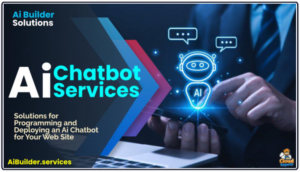Building a Unified Data Platform for AI Chatbots
A unified data platform is the backbone of an effective AI chatbot for digital government services, enabling seamless data access and accurate responses.
 Creating a unified data platform for AI chatbots is essential for organizations aiming to deliver seamless, intelligent, and context-aware user experiences.
Creating a unified data platform for AI chatbots is essential for organizations aiming to deliver seamless, intelligent, and context-aware user experiences.
A well-designed platform integrates various data sources to ensure chatbots can access real-time, accurate information.
A unified data platform serves as a centralized hub that consolidates data from disparate government systems, enabling an AI chatbot’s large language model (LLM) to access, process, and retrieve relevant information seamlessly. The platform must handle structured data (e.g., databases of citizen records) and unstructured data (e.g., policy documents, FAQs), provide real-time updates, and comply with stringent privacy regulations.
This involves consolidating structured and unstructured data from databases, APIs, and external systems like CRMs or knowledge bases. This unified approach enables chatbots to provide consistent responses across diverse queries, enhancing user satisfaction.
Several architectural approaches can support a unified data platform, each with distinct advantages and trade-offs. Below are three common architectures suitable for government chatbots:
- Centralized Data Warehouse Architecture: A centralized repository that extracts, transforms, and loads (ETL) data from various agency systems into a single data warehouse. The LLM queries this warehouse via APIs or SQL-based interfaces.
- Federated Data Architecture: A decentralized approach where data remains in agency-specific databases, but a middleware layer (e.g., API federation or data virtualization) provides unified access to the LLM. The chatbot queries multiple sources in real time without central storage.
- Hybrid Cloud-Based Architecture: Combines a centralized cloud-based data lake or warehouse with federated access to real-time agency data. The cloud platform stores pre-processed, frequently accessed data, while APIs connect to agency systems for live updates.

